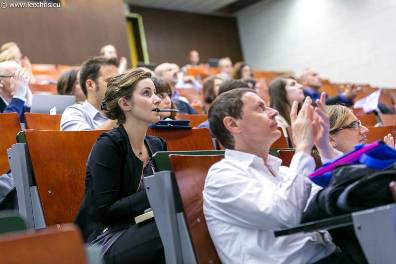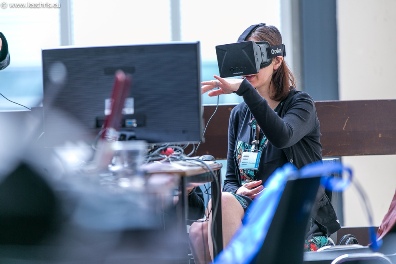Journal of CyberTherapy & Rehabilitation
Summer 2011, Volume 4, Issue 2
EDITORIAL
Welcome to the Summer 2011 issue of the Journal of CyberTherapy & Rehabilitation (JCR). As you know, JCR is one of the two official journals of the International Association of CyberPsychology, Training & Rehabilitation (iACToR). Now in its 16th year, the annual international CyberPsychology & CyberTherapy Conference (CT16) agreed, in 2009, to become the official conference of iACToR. So, along with CyberPsychology, Behavior, & Social Networking Journal (CYBER), CyberTherapy & Rehabilitation (C&R) Magazine, and JCR, we celebrate our Combined Communications Platform. The journals, conference, magazine, and association combine into one powerful platform to address previous information deficits in the utilization of advanced technologies in healthcare. We will strive to speak with a united voice to inform and educate stakeholders about the uses of technologies in healthcare, as well as how technologies are impacting behavior and society.
This year we are proud to be holding CT in Canada. Organized by the Interactive Media Institute (IMI), a 501c3 nonprofit organization, in cooperation with Université du Québec en Outoauais (UQO), CT16 is being held June 19-22, 2011 in Gatineau, Canada. This venue speaks to the continued growth and collaboration, not just amongst Europe and the U.S., but also amongst researchers and scholars worldwide. This year’s conference theme is two-fold: First, CT16 will explore technologies as enabling tools. This will include the uses of advanced technologies such as Virtual Reality (VR) simulations, videogames, telehealth, video-conferencing, the Internet, robotics, brain computer interfaces, wearable computing, non-invasive physiological monitoring devices, in diagnosis, assessment, and prevention of mental and physical disorders. In addition, we will look at interactive media in training, education, rehabilitation, and therapeutic interventions. Second, CT16 will explore the impact of new technologies. CT16 will investigate how new technologies are influencing behavior and society, for example, through healthy ageing initiatives, positive and negative effects of social network- ing tools, and online gaming.
I would like to take this opportunity to thank all those who are helping to make this year’s conference possible through their tireless energy and drive the Co-Organizer and Conference Co-Chair Professor Stéphane Bouchard; this year’s Scientific Chairs, Professors Paul Emmelkamp, Wijnand Ijsselsteijn and Giuseppe Riva; Exhibit Chair Professor Sun Kim; Workshop Chair Pro- fessor Heidi Sveistrup; Cyberarium Chair Geneviève Robillard; and Website Chair Professor Andrea Gaggioli. Many thanks also to the Scientific Committee, made up of prominent researchers from around the world, and the Local Advisory Committee in Gatineau, as well as all of the presenters and attendees. Finally, my gratitude to Geneviève Robillard, Emily Butcher and Jocel Rivera for overseeing the Conference Coordination, to Christina Valenti for editing related materials, and to the teams at Université du Québec en Outaouais, Interactive Media Institute, Virtual Reality Medical Center, and Virtual Realty Medical Institute for their time and contributions to all facets of the conference.
To our sponsors, who continue to support our vision and help make it a reality, a warm and heartfelt thank you – 3dVia, Assemblée Nationale du Québec, Canada Research Chair in Clinical Cyberpsychology, Casino LacLeamy, the European Commission Information Society and Media, Gouvernement du Québec, Interactive Media Institute (IMI), International Association of Cy- berPsychology, Training & Rehabilitation (iACToR), INTERSTRESS, In Virtuo, Istituto Auxologico Italiano, Mary Ann Liebert, Inc. Publishers, National Institute on Drug Abuse (NIDA), Université du Québec en Outaouais (UQO), Ville de Gatineau, the Virtual Reality Medical Center (VRMC), the Virtual Reality Medical Institute (VRMI) and WorldViz.
As integral parts of our Combined Communications Platform, the CT Conference series will continue to work together with iACToR, JCR, and C&R to inform and educate industry, academia, and government officials and the general public on the explosive growth of advanced technologies for therapy, training, education, prevention and rehabilitation.
As in previous conferences, this year’s conference will be hosting an interactive exhibit area, the Cyberarium, which allows conference attendees and members of the press to try new technologies firsthand. To recognize outstanding achievements by students and new researchers, as well as lifetime achievement for a senior researcher, we will also be hosting awards during the conference and announcing the 2011-2012 iACToR officers during the General Assembly. Pre-conference workshops will focus on advanced topics including psychotherapeutic applications, brain computer interface devices, and rehabilitation, and there will also be an introduction to VR workshop for those newer to the area.
As we approach CT16 with excitement, we begin too to look toward next year’s conference, CyberPsychology & CyberTherapy 17, to be held in Brussels, Belgium September 12-15, 2012. Thank you again for your commit- ment to the evolution of healthcare!
Brenda K. Wiederhold, Ph.D., MBA, BCIA
Editor-in-Chief, Journal of CyberTherapy & Rehabilitation
Virtual Reality Medical Institute





